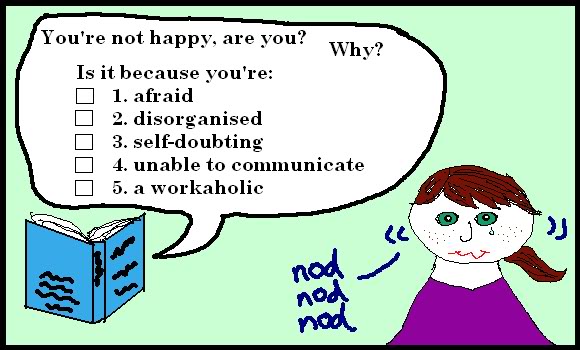If you remember my Actions for January, I decided to read a book on procrastination. Ironically I not only got around to doing it, but I read two! I'm glad I did, because the approaches they used were so different, I was amazed. I thought I'd do something a bit different, and review them in picture form. I used Boy's graphics tablet for the illustrations.
The first book I read was Eat That Frog! : 21 great ways to stop procrastinating and get more done in less time / by Brian Tracy, a motivational writer and speaker.
That's pretty much it. The book focuses almost wholly on procrastination in the workplace. In the Introduction, Tracy explains that he's not going to go into the complex details of why people procrastinate, but concentrate on strategies to stop procrastinating. This assumes a frame of mind for the reader that hasn't necessarily been achieved yet. I certainly haven't. Besides, I'm not really interested in making more money and having a fancier car. In conclusion, I don't think this book is really for me.
The second book I read was The procrastinator's guide to getting things done / by Monica Romirez Basco. This approaches the topic from a completely different viewpoint. Basco is a psychologist specialising in cognitive behavioural therapy. So, unlike Eat That Frog, this book is all about why people procrastinate.
Basco covers procrastination in all areas of life and for many reasons. The Support Group members in the book struggle with everything from delaying telling a grandmother about a divorce because of the possibility that she won't approve, to not doing housework because watching DVDs is more fun. The focus is on making progress in small steps and thinking about why you're doing what you're doing - or not doing! There are exercises and tips for dealing with procrastination in a wide variety of situations. The "On A Personal Note" sections, where the author writes about her own experiences with procrastination, add a friendly, reassuring touch. In the final chapter, the Support Group members all make at least some progress, leaving the reader with an feeling of optimism. For anyone who is truly willing to change and is ready to examine their issues and mental processes, this book will prove very valuable.






No comments:
Post a Comment